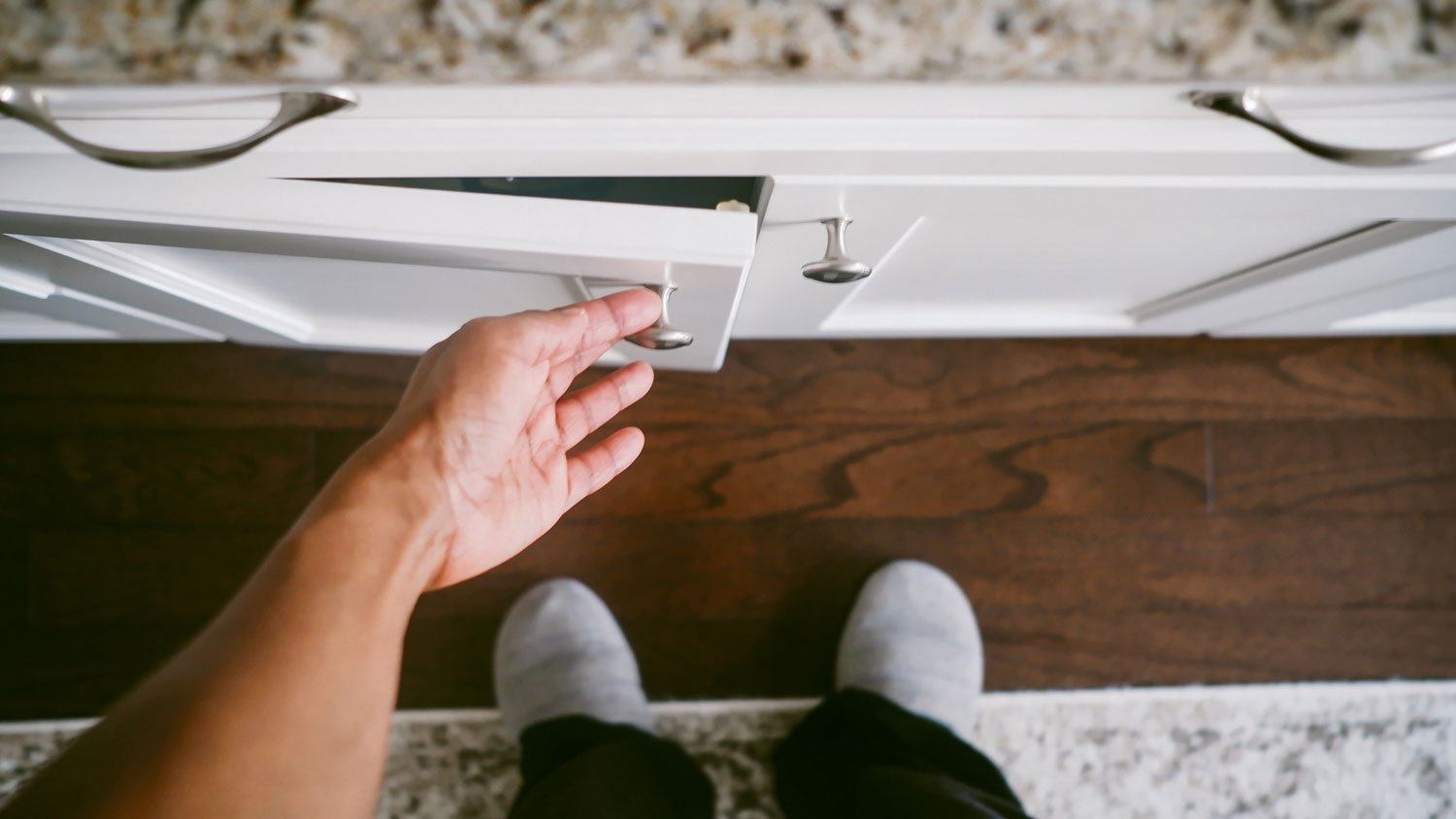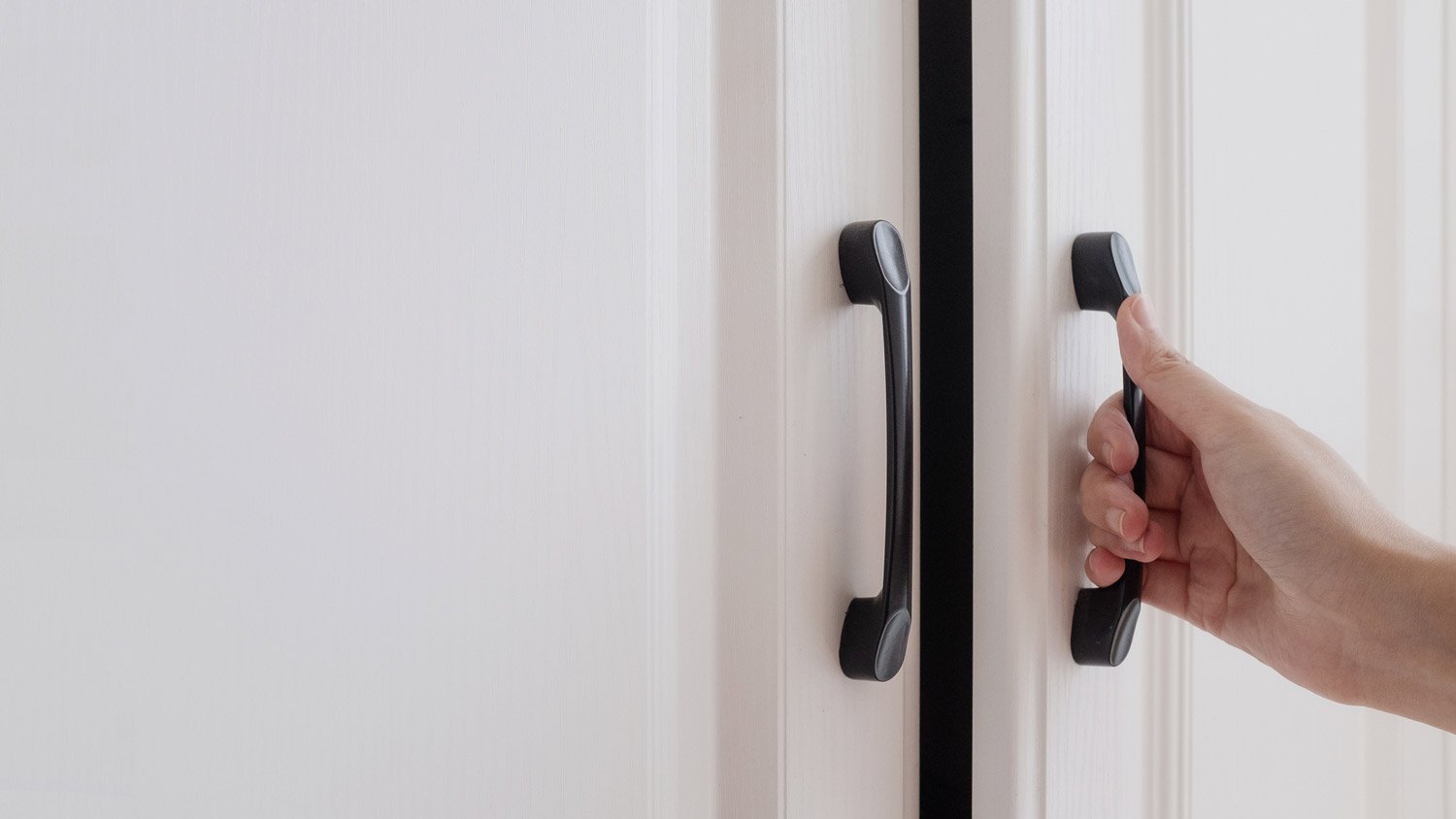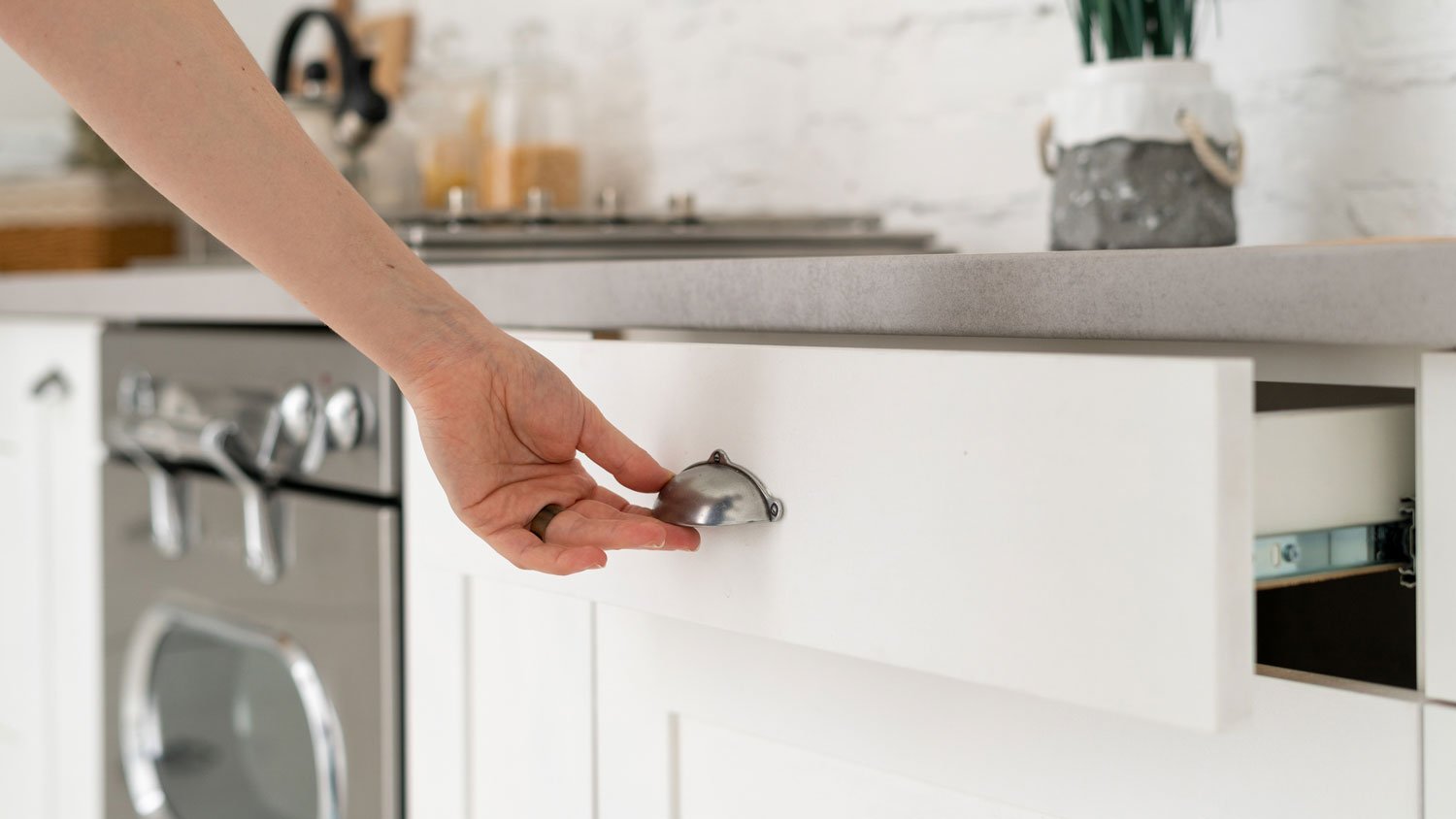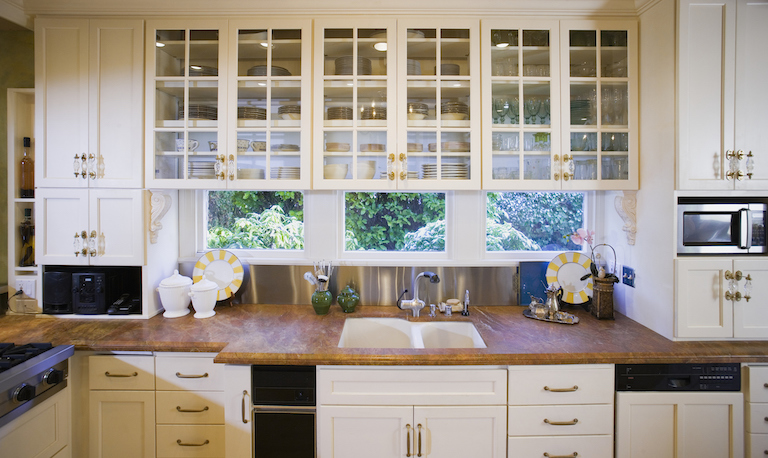
The cost of garage cabinetry and storage depends on the size, materials, labor, and more. Our guide will show you how much garage cabinets cost.
The right cabinet hardware can be the finishing touch your kitchen or bath needs


Whether you live in a studio apartment or a sprawling estate, your cabinet hardware gets used every day, even if you don’t realize it. The type of cabinet hardware in your kitchen, including drawer pulls, knobs, and handles, are essential to functioning cabinets, which is why you shouldn’t overlook them when you’re designing or upgrading your space.
While the cost of kitchen cabinets can take up a major portion of your home building or remodeling budget, you can find quality, stylish cabinet hardware for a fraction of the cost. You’ll want to make sure you sample different materials and options to determine what works best for your space. If you’re still stumped, the guide below can help you determine which types of cabinet hardware will best suit your style and needs.

Knobs are singular fixtures mounted to a drawer or cabinet with one screw. They come in all shapes and sizes, from round to square and oval. This type of cabinet hardware works best for doors or cabinets that aren’t heavy or oversized, since knobs are generally smaller and less weighty than other options. You can also mix in knobs with handles, so that the small cabinet door you want to open has a knob you can grab while a heavier drawer with pots and pans has a sturdier handle.
| Pros | Cons |
|---|---|
| Attached by only one screw | Hard to get them perfectly aligned |
| Less visually distracting in a small kitchen | Can be more difficult to grip |
| Typically more affordable | Loosen more easily than pulls |
Best for: Smaller cabinets and drawers

Also called drawer pulls, handle pulls are mounted to cabinets with two screws, so they can often be trickier to install than a knob. However, handle pulls are by far the most popular type of cabinet hardware due to their function and wide range of styles. They typically have a bar or rod-like look and come in matching finishes or styles to knobs so you can coordinate them with your kitchen cabinet color. If you’re replacing existing handle pulls with new ones, you’ll want to measure the length from the center of one mounting hole to another to ensure your new handle pull is the right size.
| Pros | Cons |
|---|---|
| Easier to grip than knobs | Can be visually distracting in a small kitchen |
| Can withstand more force and weight than knobs | Require two holes to install |
| Don’t loosen as easily as knobs | May need to fill holes and redrill to swap out styles |
Best for: Heavy drawers and frequently-used cabinets

Bin pulls, often referred to as cup pulls, are dome-shaped with an opening at the bottom for your hand to grab easily. They feature a hooded design in various shapes, including round, square, oval, and rectangle. Bin pulls require at least two holes for mounting, with some styles requiring more. Though the more common styles are used in traditional or rustic spaces, you can also find modern versions if you prefer a bigger piece of hardware on your cabinets.
| Pros | Cons |
|---|---|
| Easier to grip than knobs | Require two or more holes to install |
| Custom, high-end look | Need frequent cleaning |
| Don’t loosen as easily as knobs | Fewer design options than handle pulls |
Best for: Traditional and rustic kitchens

Similar to a door knocker, drop pulls feature a pull or handle that swings up to open a drawer or cabinet. This pull type is more common on more traditional or ornate cabinetry, since it’s more decorative and detailed. When it’s not in use, the handle lies flush with the cabinet or drawer, then can be pulled up and back down. There are also different variations of drop pulls, from ball pulls to ring pulls and options with backplates. They can be mounted to the kitchen cabinet with one or two holes, depending on the style.
| Pros | Cons |
|---|---|
| Lie flush when not in use | Not as easy to grasp as handle pulls |
| Custom, high-end look | May cause wear to cabinet finish over time |
| Some are attached by only one screw | Fewer design options than handle pulls |
Best for: People who want ornate, decorative hardware

Paired with a knob or pull, backplates act as a more decorative piece of hardware to give your space a more custom or high-end feel. Backplates for knobs will come with one mounting hole, while options for pulls with two mounting holes. They are typically placed under the knob or pull. Once installed, backplates and their pulls or handles will look more like one piece, so your guests won’t know the difference. If you’re wary of installation, you may want to look into cabinet installation companies near you to take on the task for you.
| Pros | Cons |
|---|---|
| Can protect cabinet finish | Add to the overall expense of hardware |
| Custom, high-end look | Make installation more challenging |
| Adds oomph to small knobs or pulls | Can be visually distracting in a small kitchen |
Best for: People who want their cabinet hardware to make a style statement
The best types of cabinet hardware are the options that work best in terms of style and function. The following factors can also influence which type of hardware you choose for your cabinets and drawers.
The more cabinets and drawers you have, the more you will spend on hardware. The cost of cabinet hardware ranges from $100 to $10,000, depending on the quantity, materials, and type. If your cabinet hardware budget is on the lower end, however, the options are still plentiful and wide ranging. Often online retailers or home improvement stores will carry styles that work for any type of cabinet.
On the opposite end of the spectrum, custom hardware made by hand instead of mass produced will increase the cost significantly, especially if it’s made from a high-quality material such as gold or semi-precious stones.
The scale of your cabinets will help determine what size knobs or pulls or use since you don’t want your hardware to disappear or stand out too much. Tiny knobs on giant cabinets may be hard to spot, while oversized pulls on a small drawer will look off. It helps to measure your cabinets and drawers or any current hardware to determine what size hardware will look best.
The lighting, faucet, and appliances in your space are a good reference point when you’re deciding between hardware finishes. Some designers recommend matching your hardware to the finish of your faucets, while others suggest mixing metals. Whichever route you prefer, it helps to try out a few options in the room before making a final decision. Whether you opt for chrome, brushed nickel, brass, black, or polished nickel, the options are endless.
A cup pull would look out of place in a modern kitchen or bath, as would a glam knob in a rustic space. The style of your kitchen or bathroom will help determine which type of hardware works best for you. The good news is that each type of hardware has a wide range of styles available, so you’re bound to find a style that works for you regardless of your kitchen cabinet colors or stains.
Installation costs for cabinet hardware can vary significantly based on factors like the number of cabinets in your space, the hardware styles and materials you choose, and the cost of labor. While costs can range anywhere from $60 to $15,000, the national average project cost is only $300.
Expect to pay a kitchen remodeling pro $5 to $30 per piece of hardware being installed. The average-sized kitchen typically includes 20 to 40 pieces of cabinet hardware, putting costs at $120 to $2,400. You'll pay more for custom hardware or high-end materials such as bronze.
Any part of a remodel that you DIY can save you money. If you opt to install cabinet hardware yourself, you'll only pay for tools and materials and can save an average of $130 to $275 on labor costs. DIY cabinet hardware installation only takes a few hours and requires common household tools such as a power drill and level.
However, it takes a lot of skill and care to ensure that all hardware ends up properly aligned. Mistakes can mean you'll need to replace or repair cabinet door fronts and may cost you significantly more over time. Many homeowners opt to hire someone to install cabinet hardware to reduce the risk of costly errors and ensure the results they want.
Melissa Graham contributed to this piece.
From average costs to expert advice, get all the answers you need to get your job done.

The cost of garage cabinetry and storage depends on the size, materials, labor, and more. Our guide will show you how much garage cabinets cost.

Discover custom cabinets cost for your home. Learn about average prices, installation factors, and ways to save on your custom cabinetry project.

Is it time for new cabinet doors in your kitchen? Let’s explore the costs of new cabinet doors so you know exactly what to expect.

A lot goes into kitchen cabinetry, and the more cabinet terminology you know, the better equipped you’ll be to design your dream kitchen. Use our guide to learn about common cabinet types, parts, materials, and finishes so you can start planning.

Understanding the difference between custom and semi-custom cabinets will help you decide what’s the best fit for your budget, space, and design taste.

Getting stunning glass cabinets doesn’t have to be complicated. Use this guide for seamless cabinet door glass insert installation.